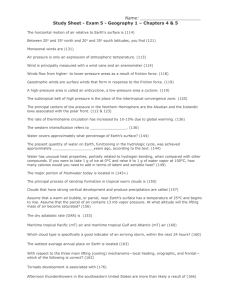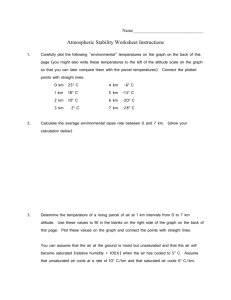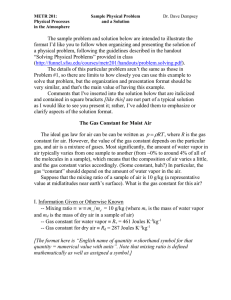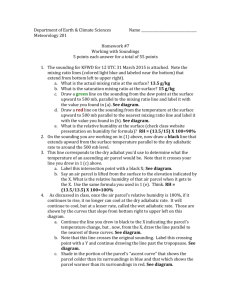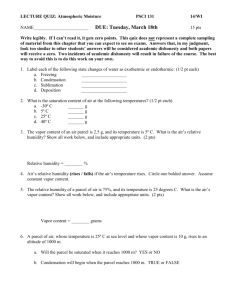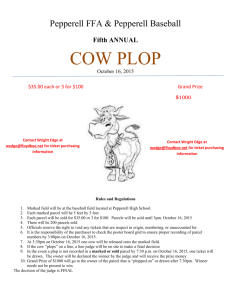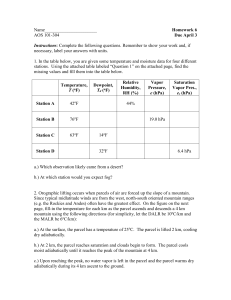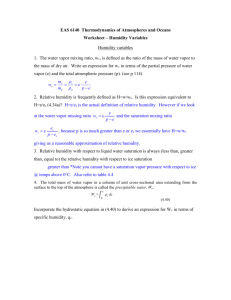Homework Set #3
advertisement
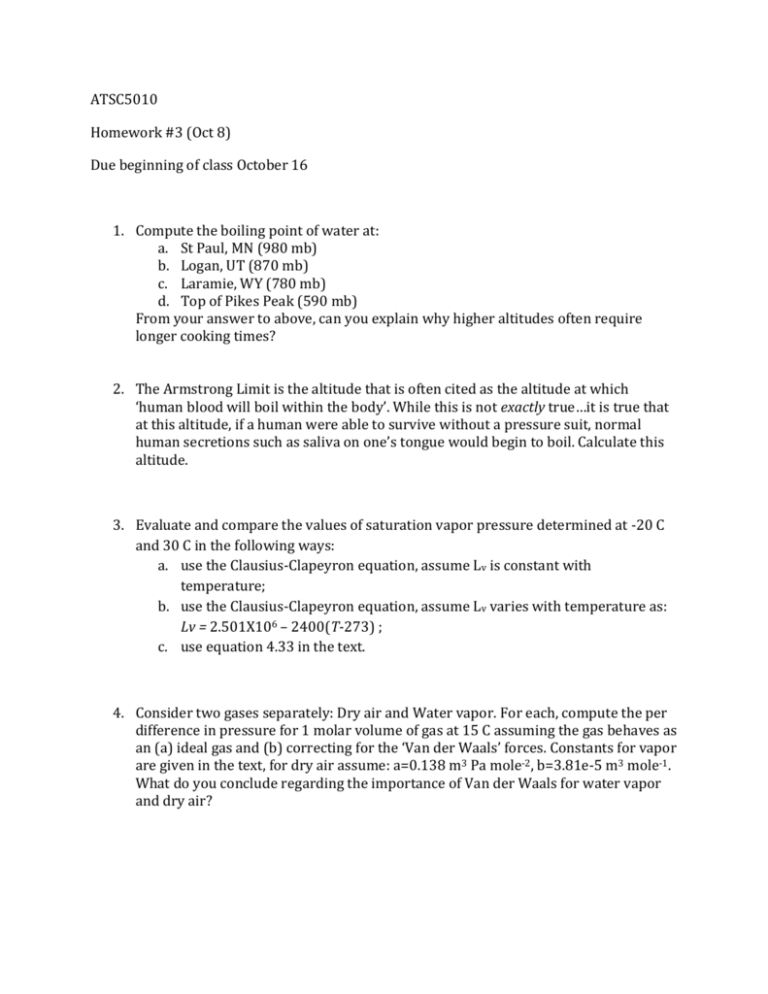
ATSC5010 Homework #3 (Oct 8) Due beginning of class October 16 1. Compute the boiling point of water at: a. St Paul, MN (980 mb) b. Logan, UT (870 mb) c. Laramie, WY (780 mb) d. Top of Pikes Peak (590 mb) From your answer to above, can you explain why higher altitudes often require longer cooking times? 2. The Armstrong Limit is the altitude that is often cited as the altitude at which ‘human blood will boil within the body’. While this is not exactly true…it is true that at this altitude, if a human were able to survive without a pressure suit, normal human secretions such as saliva on one’s tongue would begin to boil. Calculate this altitude. 3. Evaluate and compare the values of saturation vapor pressure determined at -20 C and 30 C in the following ways: a. use the Clausius-Clapeyron equation, assume Lv is constant with temperature; b. use the Clausius-Clapeyron equation, assume Lv varies with temperature as: Lv = 2.501X106 – 2400(T-273) ; c. use equation 4.33 in the text. 4. Consider two gases separately: Dry air and Water vapor. For each, compute the per difference in pressure for 1 molar volume of gas at 15 C assuming the gas behaves as an (a) ideal gas and (b) correcting for the ‘Van der Waals’ forces. Constants for vapor are given in the text, for dry air assume: a=0.138 m3 Pa mole-2, b=3.81e-5 m3 mole-1. What do you conclude regarding the importance of Van der Waals for water vapor and dry air? 5. Consider two parcels of air. Both have dew point depressions (T-TD) of 10 C. One parcel is at 5 C, the other is at 25 C. Does one of the parcels have a higher relative humidity? If so, which one? Support your answer in terms of vapor pressure. 6. Similar to (5), but now you have two parcels with identical dew point depressions of 10 C and identical temperatures of 20 C. One parcel is at 900 mb and the other is at 800 mb. Does one of the parcels have a higher relative humidity? What does this tell us about mixing ratio and its relationship to relative humidity? 7. Consider a parcel with temperature, T0=20 C, P0=1000 mb. The parcel is lifted adiabatically to 800 mb, at which the parcel just becomes saturated. Do the following: A. Derive an equation that describes the initial saturation vapor pressure of the parcel as a function of: Ttr = 273.16 K, etr = 611 Pa, Lv, Rv, and initial temperature, T0 (assume Lv and Rv are constant with T). B. What is the final temperature of the parcel (in C) C. What is the final saturation mixing ratio (in g/kg) D. What is the initial actual mixing ratio (in g/kg)
